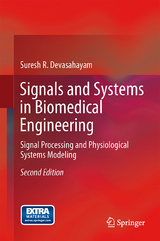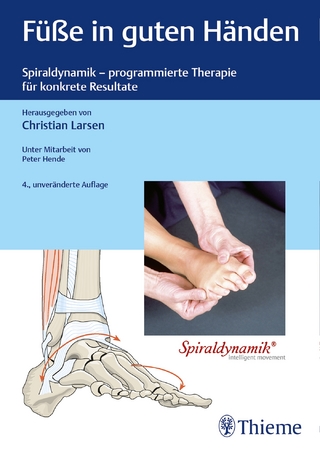
Signals and Systems in Biomedical Engineering
Signal Processing and Physiological Systems Modeling
Seiten
2000
Kluwer Academic/Plenum Publishers (Verlag)
978-0-306-46391-4 (ISBN)
Kluwer Academic/Plenum Publishers (Verlag)
978-0-306-46391-4 (ISBN)
- Titel erscheint in neuer Auflage
- Artikel merken
Zu diesem Artikel existiert eine Nachauflage
Aims to fill a gap in biomedical data analysis in making the connection between signal processing and physiological modeling. Based on the premise that the use of signal processing techniques is predicated on explicit or implicit models, this book provides a foundation in systems analysis and signal processing techniques for physiological data.
This book fills a critical gap in biomedical data analysis in making the connection between signal processing and physiological modeling. Based on the premise that the use of signal processing techniques is predicated on explicit or implicit models, this book provides a foundation in systems analysis and signal processing techniques for physiological data. The book comprises two main parts: namely, signal processing techniques for linear systems, and physiological modeling. Beginning with a broad introduction to signals and systems, the book proceeds to contemporary techniques in digital signal processing. While maintaining continuity of mathematical concepts, the emphasis is on practical implementation and applications. The signal processing topics covered include Fourier transform, the wavelet transform, and optimal filtering techniques. The book presumes only knowledge of college mathematics and is suitable for a beginner in the subject; however, a student with a previous course in analog and digital signal processing will find that only a third of the book contains a bare treatment of classical signal processing.
The extensive use of diagrams illustrates the graphical nature of modern signal processing, and provides easy descriptions of practical techniques and their shortcomings. Each chapter has a number of illustrative examples and exercises. The accompanying software provides exercises in convolution, sampling, Fourier analysis and wavelet decomposition that illustrate the use of these techniques as well as their shortcomings. The latter part of the book discusses techniques of physiological modeling, contrasting biophysical models with black-box models, and experimental procedures used in such modeling. Model-based data analysis including noise reduction and feature extraction in physiology are discussed in detail. Several numerical simulation exercises are also outlined for the student.
This book fills a critical gap in biomedical data analysis in making the connection between signal processing and physiological modeling. Based on the premise that the use of signal processing techniques is predicated on explicit or implicit models, this book provides a foundation in systems analysis and signal processing techniques for physiological data. The book comprises two main parts: namely, signal processing techniques for linear systems, and physiological modeling. Beginning with a broad introduction to signals and systems, the book proceeds to contemporary techniques in digital signal processing. While maintaining continuity of mathematical concepts, the emphasis is on practical implementation and applications. The signal processing topics covered include Fourier transform, the wavelet transform, and optimal filtering techniques. The book presumes only knowledge of college mathematics and is suitable for a beginner in the subject; however, a student with a previous course in analog and digital signal processing will find that only a third of the book contains a bare treatment of classical signal processing.
The extensive use of diagrams illustrates the graphical nature of modern signal processing, and provides easy descriptions of practical techniques and their shortcomings. Each chapter has a number of illustrative examples and exercises. The accompanying software provides exercises in convolution, sampling, Fourier analysis and wavelet decomposition that illustrate the use of these techniques as well as their shortcomings. The latter part of the book discusses techniques of physiological modeling, contrasting biophysical models with black-box models, and experimental procedures used in such modeling. Model-based data analysis including noise reduction and feature extraction in physiology are discussed in detail. Several numerical simulation exercises are also outlined for the student.
Acknowledgments. Preface. 1. Introduction to Systems Analysis and Numerical Methods. 2. Continuous Time Signals and Systems. 3. Fourier Analysis for Continuous Time Processes. 4. Discrete Time Signals and Systems. 5. Fourier Analysis for Discrete-Time Processes. 6. Time-Frequency and Wavelet Analysis. 7. Estimation of Signals in Noise. 8. Feedback Systems. 9. Model Based Analysis of Physiological Signals. 10. Modeling the Nerve Action Potential. 11. Modeling Skeletal Muscle Contraction. 12. Modeling Myoelectric Activity. 13. System Identification in Physiology. 14. Modeling the Cardiovascular System. 15. A Model of the Immune Response to Disease. Appendix. Bibliography. Index.
| Erscheint lt. Verlag | 30.6.2000 |
|---|---|
| Reihe/Serie | Topics in Biomedical Engineering |
| Zusatzinfo | 9 black & white illustrations |
| Sprache | englisch |
| Maße | 155 x 235 mm |
| Gewicht | 1490 g |
| Themenwelt | Medizin / Pharmazie ► Physiotherapie / Ergotherapie ► Orthopädie |
| Technik ► Medizintechnik | |
| ISBN-10 | 0-306-46391-1 / 0306463911 |
| ISBN-13 | 978-0-306-46391-4 / 9780306463914 |
| Zustand | Neuware |
| Informationen gemäß Produktsicherheitsverordnung (GPSR) | |
| Haben Sie eine Frage zum Produkt? |
Mehr entdecken
aus dem Bereich
aus dem Bereich
Spiraldynamik - programmierte Therapie für konkrete Resultate
Buch | Hardcover (2021)
Thieme (Verlag)
105,00 €



